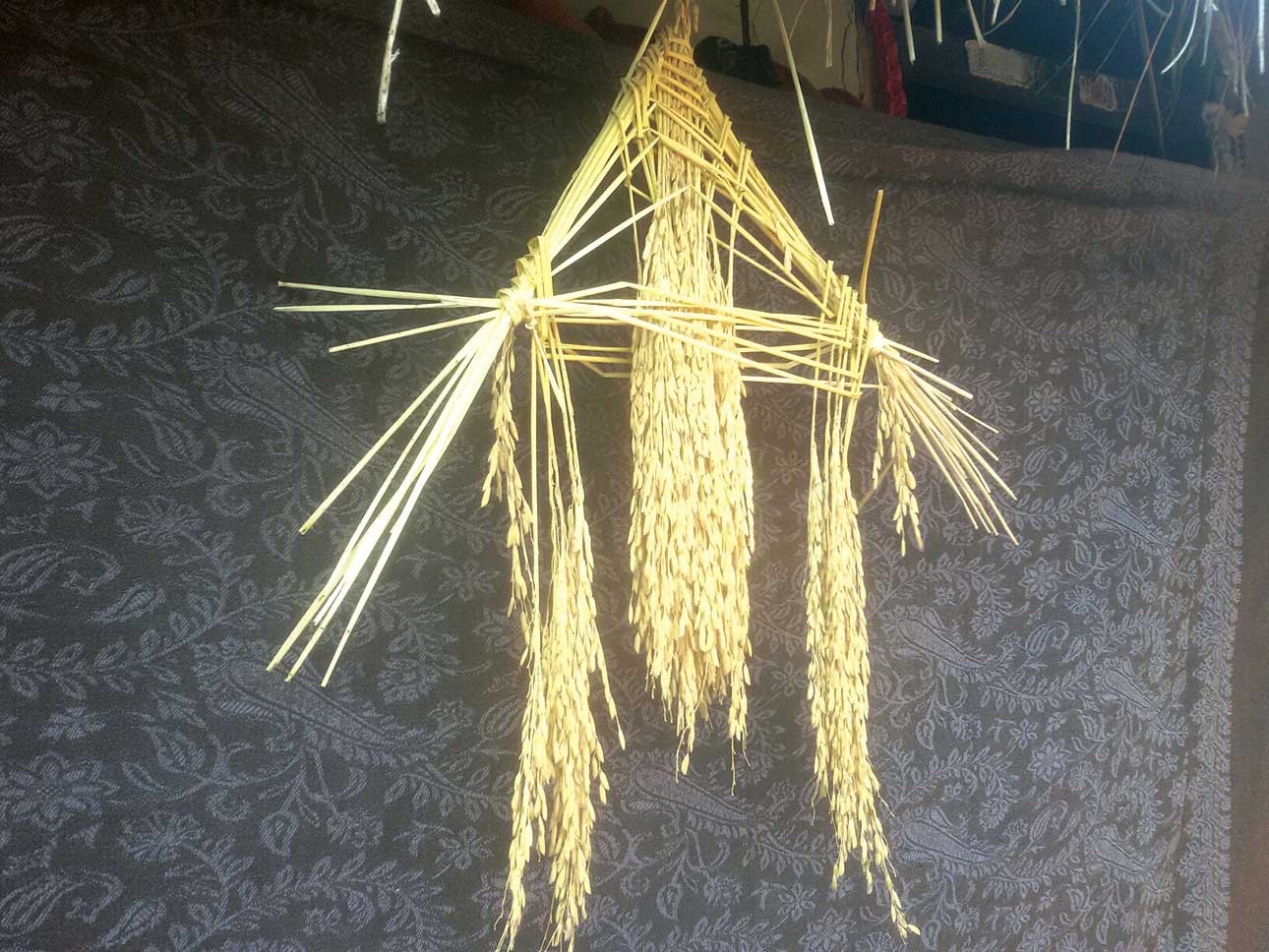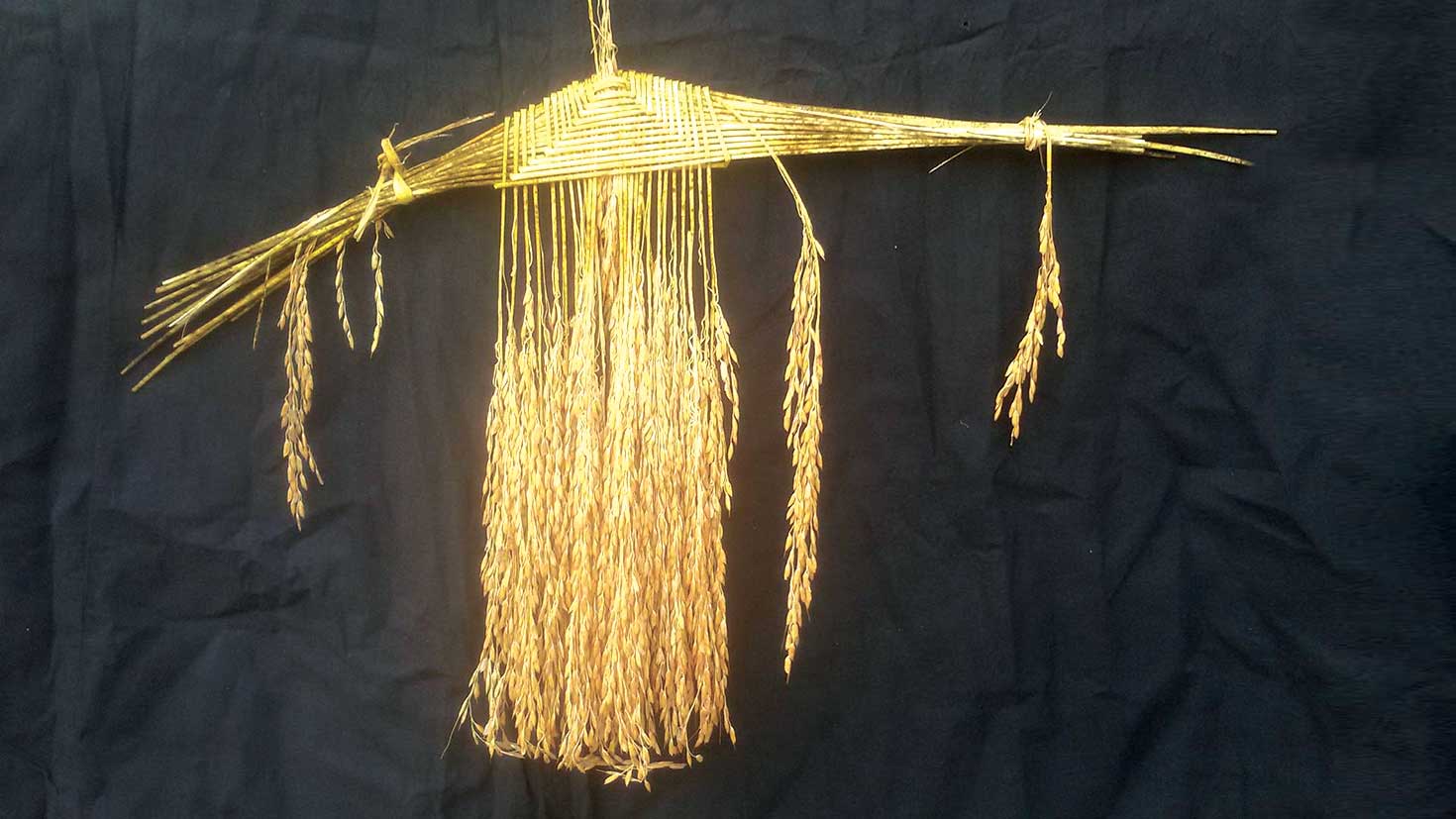A dying tradition of weaving rice sheaves into beautiful art forms
 I vividly remember the old days, when there were no threshers and the harvested rice had to be threshed by bulls going around a bamboo pole installed in the middle of the khaliyan, a yard prepared to store and thresh the newly harvested crop. There were no rice cutting machines, either. The rice cutting and threshing used to be tedious and time consuming. In addition, many people needed to work together for long hours. However, there was something special about the rice cutting and threshing events. Since it would take days to harvest the crop, the women would take turns to rest and prepare various forms out of rice sheaves, called jhutti. The men would then hang those beautiful shaped jhuttis to the bamboo poles installed for threshing rice. Children would learn the art of making jhuttis from their elders and hang them in their houses, here and there.
I vividly remember the old days, when there were no threshers and the harvested rice had to be threshed by bulls going around a bamboo pole installed in the middle of the khaliyan, a yard prepared to store and thresh the newly harvested crop. There were no rice cutting machines, either. The rice cutting and threshing used to be tedious and time consuming. In addition, many people needed to work together for long hours. However, there was something special about the rice cutting and threshing events. Since it would take days to harvest the crop, the women would take turns to rest and prepare various forms out of rice sheaves, called jhutti. The men would then hang those beautiful shaped jhuttis to the bamboo poles installed for threshing rice. Children would learn the art of making jhuttis from their elders and hang them in their houses, here and there.
Art depicting everyday things
The women drew inspiration from the everyday things that they saw in their surroundings. They would make jhuttis resembling a comb (called kakahi), a cow’s beak (called kauwatholi), a fan (called bena), a mat (called patiya), a granary (called bakhari), a baby’s toy (called jhunjhuna), a bridegroom’s turban (called maur), among others. Besides, they would always try to make new forms and shapes, a common one being a triangular shaped jhutti.
However, the creativity that usually came from working together for long hours in the field is gone these days, and they would just gather a bunch of rice sheaves and tie them together to continue the tradition.
Conservation at the heart
So did they make jhuttis just for aesthetic purposes only? No, it had a deeper purpose. When I asked an old man about the reason behind making jhuttis, he replied with a question, “How would the birds survive if there is no rice in the surroundings?”
After harvesting rice from the fields, there remained nothing for the birds to peck at. The jhuttis hung from the poles would then provide food for the birds. What a thoughtful idea! Also, the jhuttis preserved rice seed varieties for the future. A Tharu elder in the Shishwani village of Siraha district has a huge collection of jhuttis that have been preserved for more than 20 years. He provides free rice to people suffering from nausea, since locals believe that the jhutti rice is a cure for the disease. His collection of different rice varieties can be a treasure trove for rice experts to revive the old varieties.
 Reviving the ancient tradition
Reviving the ancient tradition
Making jhutti seems a tough task, but once you’re into it, you’ll be able to make different forms and shapes. And who knows more than the locals? If jhutti-making competitions are organized in the villages, the young would learn the tips and tricks of jhutti-making from the old women who still boast of the traditional art. On an ingenious note, the jhuttis can be framed and sold as souvenirs to tourists, both foreigners and domestic, traveling to the southern plains of Nepal.









